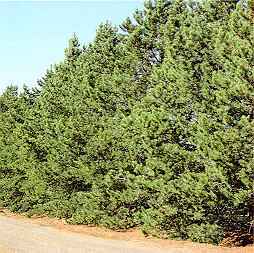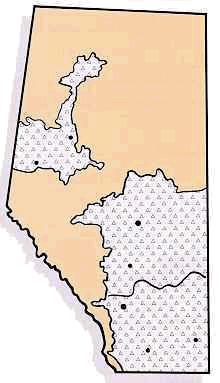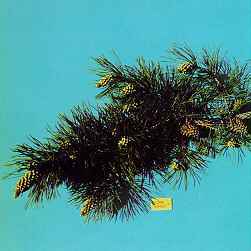| | Plant characteristics | Site preference | Hardiness | Uses | Problems | Diseases | Pruning
.

Scientific Name: Pinus contorta var. latifolia Engelm.ex S.Wats.
Plant Characteristics
Lodgepole pine is a tall, slender evergreen with little taper and straight trunk. It can reach a height of 12 to 25 m (40 to 80 ft), with a spread of 6 m (20 ft). The branches curve upward.
Lodgepole pine can live from 50 to 100 years, with a growth rate from 30 to 90 cm (12 to 40 in.) a year.
Leaves - Needle-shaped in bundles of 2, 2.5 to 8 cm (1 to 3 in.) long, spirally twisted, stiff, very sharply pointed, yellowish-green, forms dense clusters towards the ends of twigs. Needles generally longer and less twisted than Jack pine.
Cones - Short cylindrical to egg-shaped, curved away from branches, 2 to 5 cm (1 to 2 in.) long, remain on trees for many years. Scales armed with a small prickle.
Bark- Orange-brown in colour, somewhat scaly.
Site Preference
Lodgepole pine is found on a wide range of soils, from very gravelly sandy to silty clay loam. It achieves its best growth on well drained loamy soils. Generally not tolerant of saline soils.
One of the most drought tolerant of our native conifers. It is often successful on dry, or otherwise severe sites due to its ability to survive where its less tolerant competitor tree succumbs.
Lodgepole pine is tolerant of shade.
Hardiness
Winter hardy.


Uses
Pine can be effectively used in a single row shelterbelt with 2 to 4 m (6 to 13 ft) between trees in a row. The tree is also recommended for combined plantings with a row of hedge materials or in a multiple-row shelterbelt, with at least 6 m (20 ft) between pines and adjacent rows of trees. It is also important for wildlife food and shelter.
Diseases
Susceptible to a variety of rusts and dwarf mistletoe.
Insects
Susceptible to pine beetles, in even - aged mature stands, and lodgepole pine sawfly.
Pruning
Pruning is not required, unless there is a double leader, then prune to retain one only. If a leader is not present, a new leader must be trained. Remove and burn any branches which may contain a boring insect.
.

Shelterbelts Varieties for Alberta provides information on a number of other trees and shrubs than may be suitable for shelterbelts.
For information about planning shelterbelts and choosing varieties, contact your local PFRA office or visit PFRA's home page. |
|